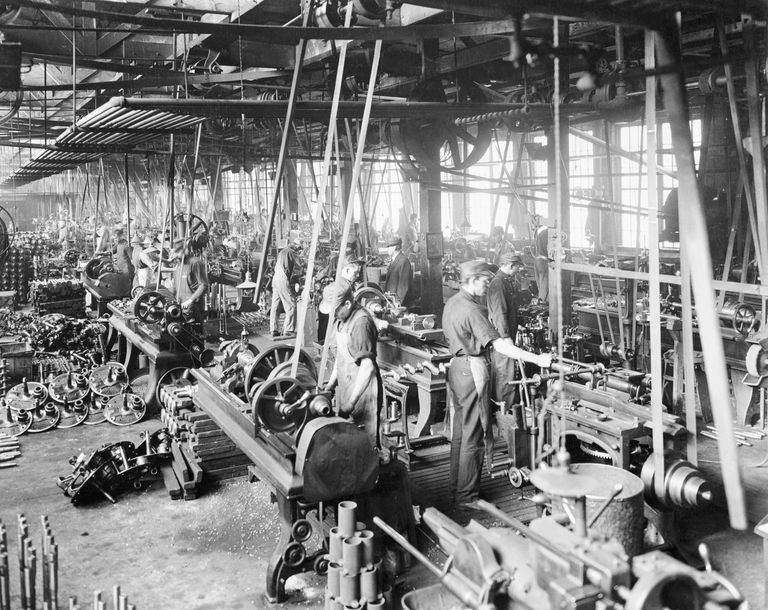The U.S. Economy in World War I
Published: 31 August 2022

automobile-factory-ww-i
American automobile factory during WWI
By Heather Michon
via the ThoughtCo.com web site
When war broke out in Europe in the summer of 1914, a sense of dread rippled through the American business community. So great was the fear of contagion from tumbling European markets that the New York Stock Exchange was closed for more than three months, the longest suspension of trade in its history.
At the same time, businesses could see the enormous potential the war might bring to their bottom lines.
The economy was mired in recession in 1914 and war quickly opened up new markets for American manufacturers. In the end, World War I set off a 44-month period of growth for the United States and solidified its power in the world economy.
A War of Production
World War I was the first modern mechanized war, requiring vast amounts of resources to equip and provision massive armies and provide them with the tools of combat. The shooting war was dependent on what historians have termed a parallel “war of production” that kept the military machine running.
During the first 2 ½ years of combat, the U.S. was a neutral party and the economic boom came primarily from exports. The total value of U.S. exports grew from $2.4 billion in 1913 to $6.2 billion in 1917. Most of that went to major Allied powers like Great Britain, France, and Russia, which scrambled to secure American cotton, wheat, brass, rubber, automobiles, machinery, wheat, and thousand of other raw and finished goods.
According to a 1917 study, exports of metals, machines, and automobiles rose from $480 million in 1913 to $1.6 billion in 1916; food exports climbed from $190 million to $510 million in that same period. Gunpowder sold for $0.33 a pound in 1914; by 1916, it was up to $0.83 per pound.
America Joins the Fight
Neutrality came to an end when Congress declared war on Germany on April 4, 1917 and the U.S. began a rapid expansion and mobilization of more than 3 million men.
“The long period of U.S neutrality made the ultimate conversion of the economy to a wartime bases easier than it otherwise would have,” writes economic historian Hugh Rockoff. “Real plant and equipment were added, and because they were added in response to demands from other countries already at war, they were added in precisely those sectors where they would be needed once the U.S. entered the war.”
Read the whole article on ThoughtCo.com web site:
External Web Site Notice: This page contains information directly presented from an external source. The terms and conditions of this page may not be the same as those of this website. Click here to read the full disclaimer notice for external web sites. Thank you.



